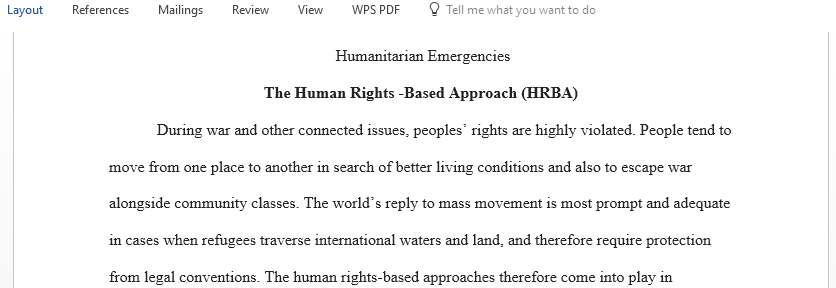Explain in details the Humanitarian Emergencies
Humanitarian Emergencies
Over the past few years, since the 1990s, there has been an increase in the migration of refugees fleeing countries in conflict. This conflict comes as a result of civil war, turmoil, or other major causes. These people may either move across national borders and become refugees or stay within the country and become internally displaced. It is estimated that there are millions of both internally displaced individuals and refugees in the world today. This picture shows you the vast number of internally displaced individuals and refugees as of 2016 by country of origin (European Union, 2017).
These crises are dubbed as complex humanitarian emergencies due to the sheer volume of people in need as a result of the crises. In addition, many of these crises are long lived and can go on for years at a time (e.g., Bosnia and Rwanda). During these crises, efforts to provide assistance are difficult as some of the groups will intercept and destroy all aid intended for another group and aid workers are targeted to be killed. In addition, many of the people engaged in these wars or unrest use tactics such as rape and torture and violate basic human rights, much of which is aimed at women and children.
During these times of strife, the entire infrastructure of the country can also be destroyed. This can affect the delivery of health services by already weak health systems that may now be weaker or nonexistent. As those migrating into the area arrive, they can easily overwhelm the system and also bring with them diseases never before seen in the region. This, coupled with poor hygiene, cramped living spaces, and poor sanitation, makes for a breeding ground of health concerns to be addressed, often with little or few resources, ultimately leading to high morbidity and mortality levels, especially among children.
Reference:
European Union. (2017). Displaced individuals. Retrieved from http://ec.europa.eu/echo/sites/echo-site/files/3029418934.jpg
Refugees by Origin in 2016
Review each hotspot to know about the number of refugees by origin in the year 2016.
This picture shows the vast number of internally displaced individuals and refugees as of 2016 by country of origin (European Union, 2017).
Humanitarian Emergencies
Read the following article:
Complex Humanitarian Emergencies: Moral Quandaries
On the basis of your research, create a 3- to 4-page report that addresses the following:
How is the human rights–based approach (HRBA) necessary in these instances, or is it?
What is an example of a complex humanitarian emergency in which the elements of the article apply? Discuss any ethical or unethical issues that may have arisen from this issue.
How do the elements illustrated in this article relate to the 10 Essential Public Health Services?
Be sure to support your points for each of the components in parentheses with data from the program and outside research.
Answer preview for Explain in details the Humanitarian Emergencies

Access the full answer containing 615 words by clicking the below purchase button
